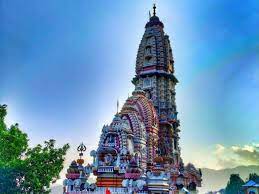RARE AND REMARKABLE NATIONAL ANIMALS

When we think of national animals, iconic species like the bald eagle or the lion often come to mind, representing strength and cultural significance. However, the world is home to a fascinating array of national animals that are rare, unusual, endangered, or even entirely non-existent. From the majestic yet critically endangered species struggling for survival to mythical creatures that capture the imagination, these animals tell stories of biodiversity, conservation, and cultural heritage. Join us as we explore these extraordinary representatives of nations around the globe, shedding light on their unique characteristics and the challenges they face in an ever-changing world.
1. OKAPI, DEMOCRATIC REPUBLIC OF CONGO
Is it an antelope? A baby giraffe? Perhaps a zebra caked in mud or a donkey? Allow us to introduce the okapi, the national animal of the Democratic Republic of Congo and one of nature's most fascinating enigmas. This remarkable creature, closely related to the giraffe, was once believed to be mythical due to its rarity and uniqueness. With its distinctive striped hindquarters, hair-covered horns, and elongated tongue, the okapi became the now-defunct International Society of Cryptozoology mascot. However, it’s important to note that the okapi is no legend; it is a genuine species—and unfortunately, it is endangered. Found only in the forests of northeastern Congo, this elusive and timid animal, often called the "forest giraffe," has experienced a significant decline in population since the mid-1990s.
2. KOMODO DRAGON, INDONESIA
Indonesia's national animal, the Komodo dragon, is the largest lizard on Earth, reaching lengths of up to 10 feet and weighing as much as 150 pounds. It is considered one of the most fearsome creatures with powerful jaws, long claws, razor-sharp serrated teeth, and a muscular tail. While they primarily scavenge for food, these dragons will hunt live prey when necessary. Despite their intimidating nature, attacks on humans are rare, as residents tend to keep their distance from these fork-tongued giants. Classified as vulnerable by the IUCN, the Komodo dragon has been protected through significant efforts by the Indonesian government, including the establishment of Komodo National Park in 1980, which later became a UNESCO World Heritage Site.
3. UNICORN, SCOTLAND
Scotland's national animal, the unicorn, is both majestic and mythical, symbolizing purity, strength, and independence on the Royal Coat of Arms. Surprisingly, in 2015, a small yet vocal group of Scots proposed replacing the unicorn, which has represented Scotland since the late 1300s, with another elusive creature: the Loch Ness Monster. Their argument wasn't against the unicorn's fantastical nature, but rather, they questioned its appeal. “How many people visit Scotland to look for unicorns? Exactly,” they pointed out. Despite this unusual debate, the unicorn remains a cherished emblem of Scotland's heritage.
4. DODO, MAURITIUS
The dodo, a curious-looking flightless bird that went extinct around 1662, serves as a poignant symbol of Mauritian pride and a stark reminder of the dangers facing endangered species due to human actions. The tragic tale of the dodo involves Dutch settlers who not only hunted these birds but also destroyed their habitat and introduced invasive species that preyed on them. Despite its extinction, the spirit of this hefty pigeon relative continues to thrive in Mauritius, with its image featured in business names, stamps, and public statues. Today, the dodo is celebrated as a tourism mascot and is the focus of a museum in Port Louis, the bustling capital, where visitors can explore drawings and skeletons of this legendary bird.
5. CHOLLIMA, NORTH KOREA
Among the empty streets and propaganda posters of Pyongyang, the capital of North Korea, one of the first sights that catches the eye of the few Western visitors allowed entry is a colossal statue of a winged horse. This impressive figure represents Chollima, a mythical creature of Chinese origin that embodies a hard-line communist version of Pegasus. Introduced in the late 1950s as a symbol of Kim Il-Sung's ambitious plans for swift postwar economic development, the slogan “Let us dash forward in the spirit of Chollima” became associated with the reconstruction campaign. Today, Chollima remains a significant and pervasive icon throughout North Korea. Towering 150 feet high on Mansu Hill, the Chollima Statue stands as one of the most striking monuments in a city renowned for its grand structures.
You may like post

THE MOST BREATHTAKING TRAIN RIDES TO TAKE THIS FALL
Explore Autumn’s Best Rail Adventures Around the Globe

THE MAGIC OF CHINESE NEW YEAR
Exploring the Vibrance and Significance of Chinese New Year Celebrations








